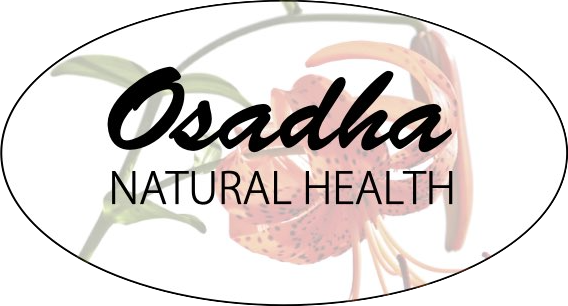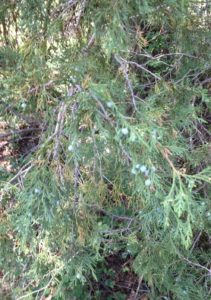I recently wrote on citrus essential oils, my favorite oils for scent. Now, we’ll move on to conifer essential oils, another group I love. These are uplifting, motivating and blend beautifully with citrus oils for both scent and energetics.
Conifers are broadly useful, whether as a little brown bottle of essential oil, a home made needle-infused oil, a chunk of resin burned as incense or a bundle of fresh twigs scenting a room. Instructions for making infused oils are coming up in a soon-to-be published article…keep your eyes peeled!
Here are 5 great conifer oils to bring into your life…
1) Juniper (Juniperus communis & other species) – Cypress family
Juniper has been used in spiritual practices since ancient times. Juniper boughs are still burned today for protection and clearing space. During WWI and WWII, juniper was burned in French sick rooms as a disinfectant. The berries and the leaves are strongly anti-microbial. Juniper is helpful for those annoying, low level urinary tract infections that seem to linger on…simply dilute in olive oil and rub over the bladder area along with whatever your internal treatment is. Juniper is too warming for an acute, burning uti, though. Speaking of the urinary system, an old study suggested that juniper oil is bad for the kidneys, but more recent studies refute this. To be conservative, I’d say avoid juniper oil in kidney disease.
The berry essential oil is more familiar commercially, but the leaves also have a wonderful scent. Juniper is sharp and balsamic with citrusy notes. If you’ve never smelled fresh juniper berries after crushing them, get thee to a fruiting juniper asap! For perfumery, juniper is both a top and middle note. The scent is both uplifting and calming. It may help with insomnia as part of a sleep pillow and soothes folks who are super sensitive to what’s going on around them. In either of these cases, try combining juniper with a little bit of vetiver.
Juniper is a digestive aid, reducing gas, spasm and “butterflies” in the stomach while aiding in protein digestion. The berries are a traditional ingredient in, among other things, wild boar recipes. The essential oil could be used similarly, but go lightly…it’s easy to overdo it and ruin the dish!
Juniper is also balancing for oily skin and can be used as part of a facial oil, lotion or cream. Remember to dilute your essential oils before applying to the skin.
2) Cypress (Cupressus sempervirens) – Cypress family
Cypress is a go-to oil for serious life transitions. For instance, it provides some comfort around the dying process, both for the person whose life is drawing to a close as well as their loved ones. Cypress is common in cemeteries, where the tall, thin tree represents a link between here and the beyond. Cypress is a key ally for grief, sadness and heart break, and I turn to cypress first before later bringing in rose.
Cypress is a skin-toning oil that’s helpful in cellulite creams because it helps circulate out accumulated wastes. Cypress is also helpful for working on benign skin growths, mild skin irritations and infection. Because cypress is anti-bacterial and reduces excessive sweating, it’s a great natural deodorant. It shines in respiratory infection either inhaled as a steam or used as a chest and back rub to soothe irritating coughs and target the infection itself. It may also help as a balm for painful menstrual cramps.
The scent of cypress is sharp, green and balsamic, and it’s a middle and a base note for perfumery.
3) Fir (Abies species) – Pine family
Fir is a more recent addition to my apothecary and perfumery shelf. It’s both a top and middle note for perfumery and is a great oil to grab when your blend needs something to “wake it up” a bit. The sharp, green and balsamic scent of fir is associated with Christmas, but fir is great any time of the year. I find it very refreshing during the hot dry month of June here in Durango. Fir combines well with many oils and can be used without it taking over the whole blend.
Fir provides support for burnout, low energy and low mood. Its chemistry supports the adrenal glands, which mediate our stress responses and get ”tired” from chronic stress. The energizing and focusing scent of fir is just what’s needed for someone stuck in an apathetic funk.
As with other conifers, fir oil is strongly anti-microbial…a great steam for colds and flu, or a belly rub for digestive tract woes.
4) Pine (Pinus species) – Pine family
Pine needles are common in the cold and flu remedies that I use. The aromatics in the needles, bark and resin are strongly anti-viral and anti-bacterial. Most respiratory infections are viral. But, some folks may go into a secondary bacterial infection after being knocked down by the initial viral infection. A steam with any of the parts of pine needles or bark, or with the essential oil itself, would be helpful during either primary or secondary respiratory infection.
Like fir, pine is motivating and uplifting. There is a reason these sorts of scents are popular during the darker months of the year, but I love them year round! If you are sluggish or down in the morning, a drop each of pine and lemon oil added to a washcloth is a great pick-me-up in the shower.
Experiment with different pines…they are all clearly “piney” in scent but each with a different nuance. For instance, Ponderosa and Pinyon pines are both clearly “pine” but are quite different in scent. Ponderosa needles have citrus notes and a tanginess to their scent while pinyon needles are more sweetly balsamic. But…if you walk up to a Pondie and stick your nose up to the bark, you’ll be rewarded with an oh-so-sweet butterscotch scent!! Pine is a pretty solid middle note for perfumery.
5) Cedarwood (Cedrus deodara) – Pine family
Both grounding and elevating, cedarwood oil is a great aid for meditation and other spiritual practices. It’s energizing but not as much as fir and pine. Cedarwood is also calming, comforting and centering…great for tension and irritability. Its is traditionally used for protection, feelings of unworthiness and to encourage a sense of control and confidence.
The scent of cedarwood oil is softer than the other conifers here. It’s clearly a conifer oil with it’s balsamic notes, but it lacks the sharpness of the others. Instead, it has a subtly sweet powdery note reminiscent of some resin essences. Cedarwood is base note for perfumery.
Cedarwood is useful for fungal skin infections and for oily skin. This makes it a useful scalp treatment as well.
Don’t confuse true cedarwood (Cedrus) oils with other oils referred to as “cedar”, such as Juniperus virginiana. They are quite different in chemistry, scent and energetics. Note that Cedrus atlantica (Atlas Cedar) is endangered; use C. deodara (Himalayan Cedar) instead.
Like citrus oils, conifer oils are rich in easily-oxidized chemicals called monoterpenes and should be stored in the fridge. Don’t use for any skin applications if the bottle has been open for a year or more. Note that many conifer oils have the potential to be skin irritants, especially of oxidized.
Some good resources
www.aromaweb.com
Keville, K and M Green (2009) Aromatherapy: A complete guide to the healing art. Crossing Press.
Worwood, VA (1999) The fragrant heavens: The spiritual dimension of fragrance and aromatherapy. Bantam Books
~~~
Content © Dr. Anna Marija Helt, Osadha Natural Health, LLC. Permission to republish any of the articles or videos in full or in part online or in print must be granted by the author in writing.
The articles and videos on this website for educational purposes only & have not been evaluated by the Food and Drug Administration. This information is not intended to diagnose, treat, cure, or prevent any disease or to substitute for advice from a licensed healthcare provider.

